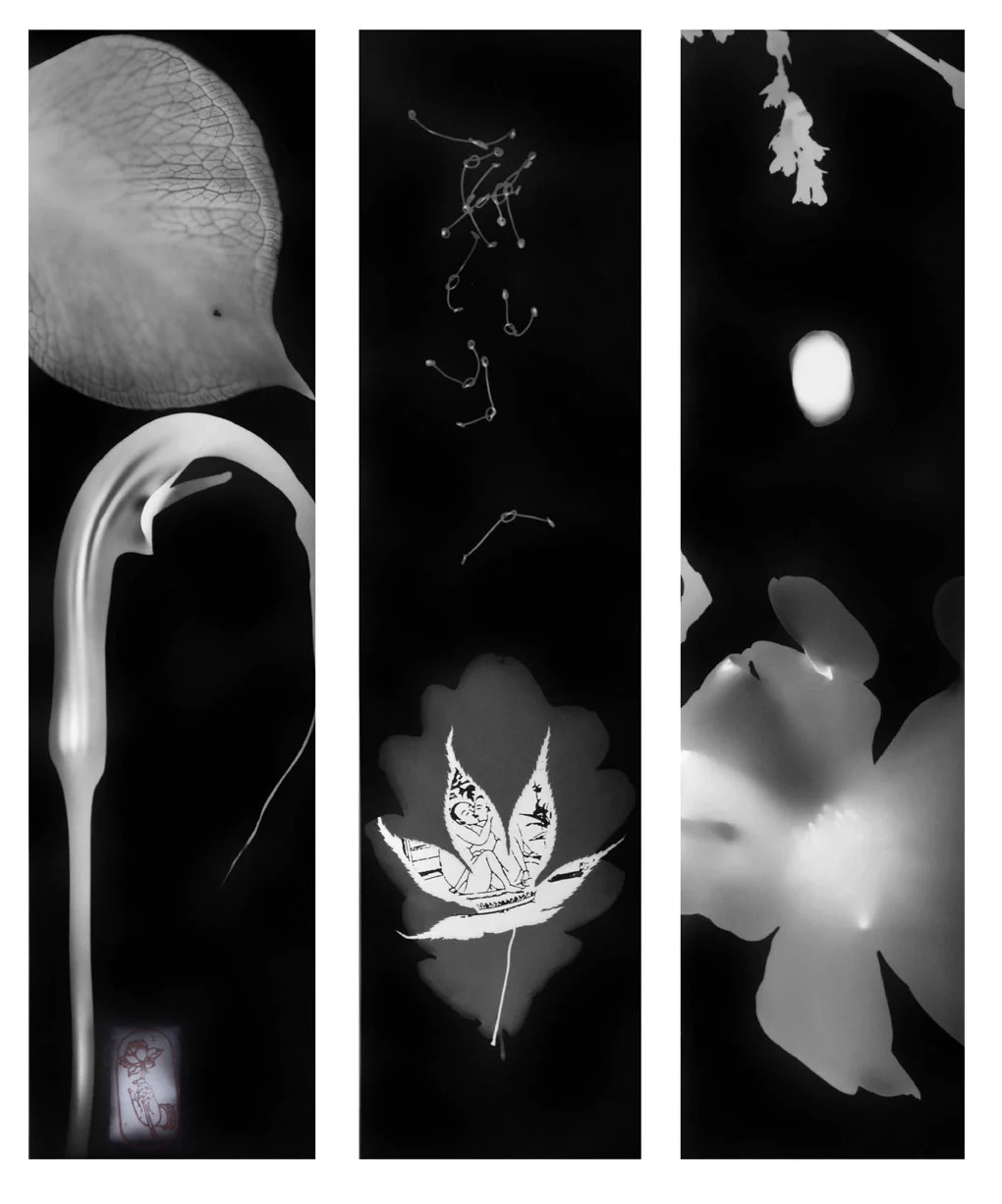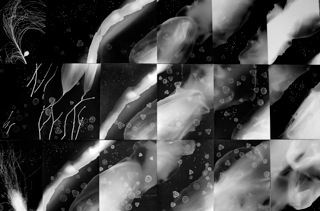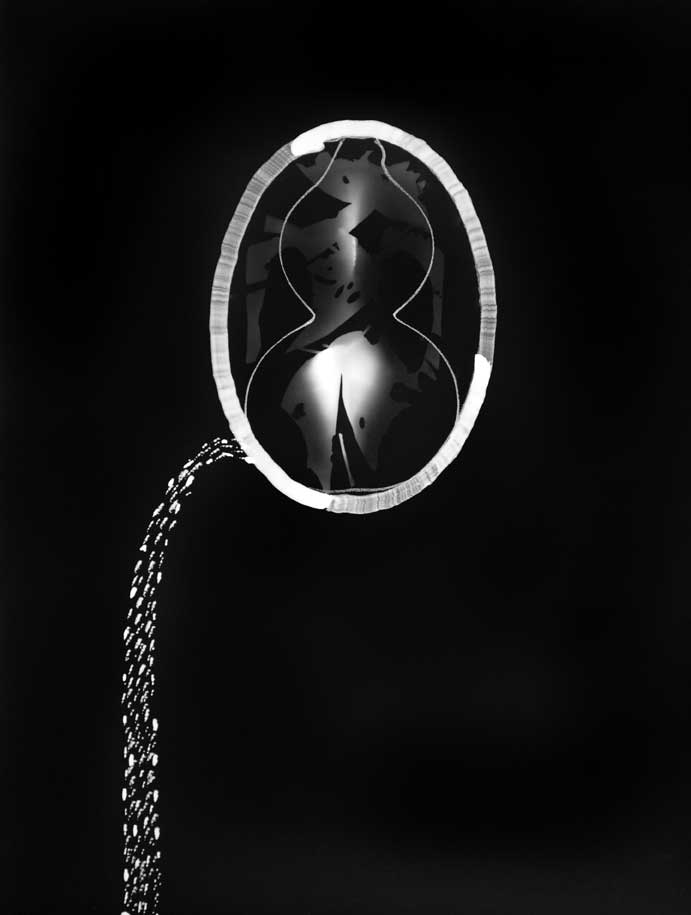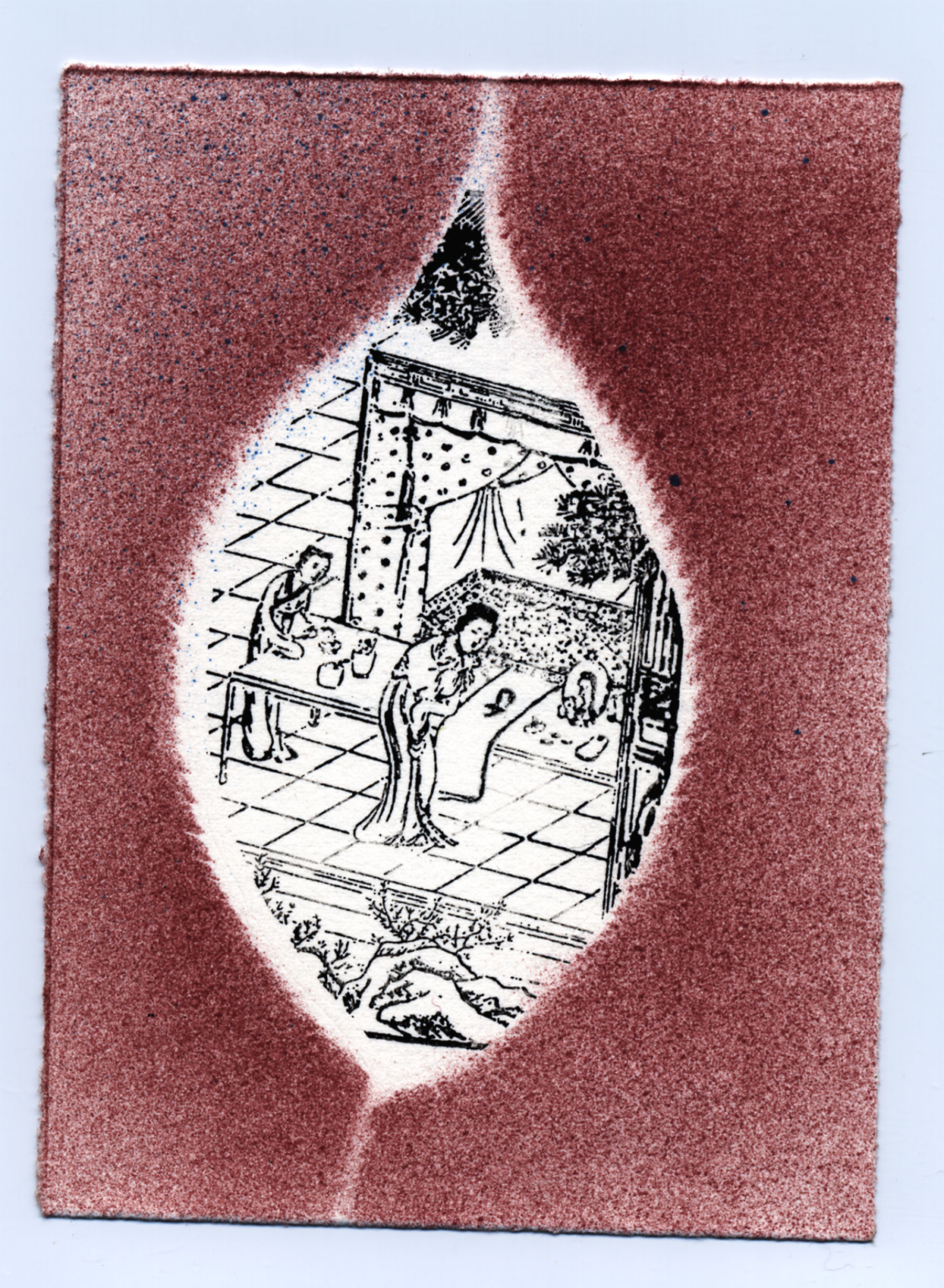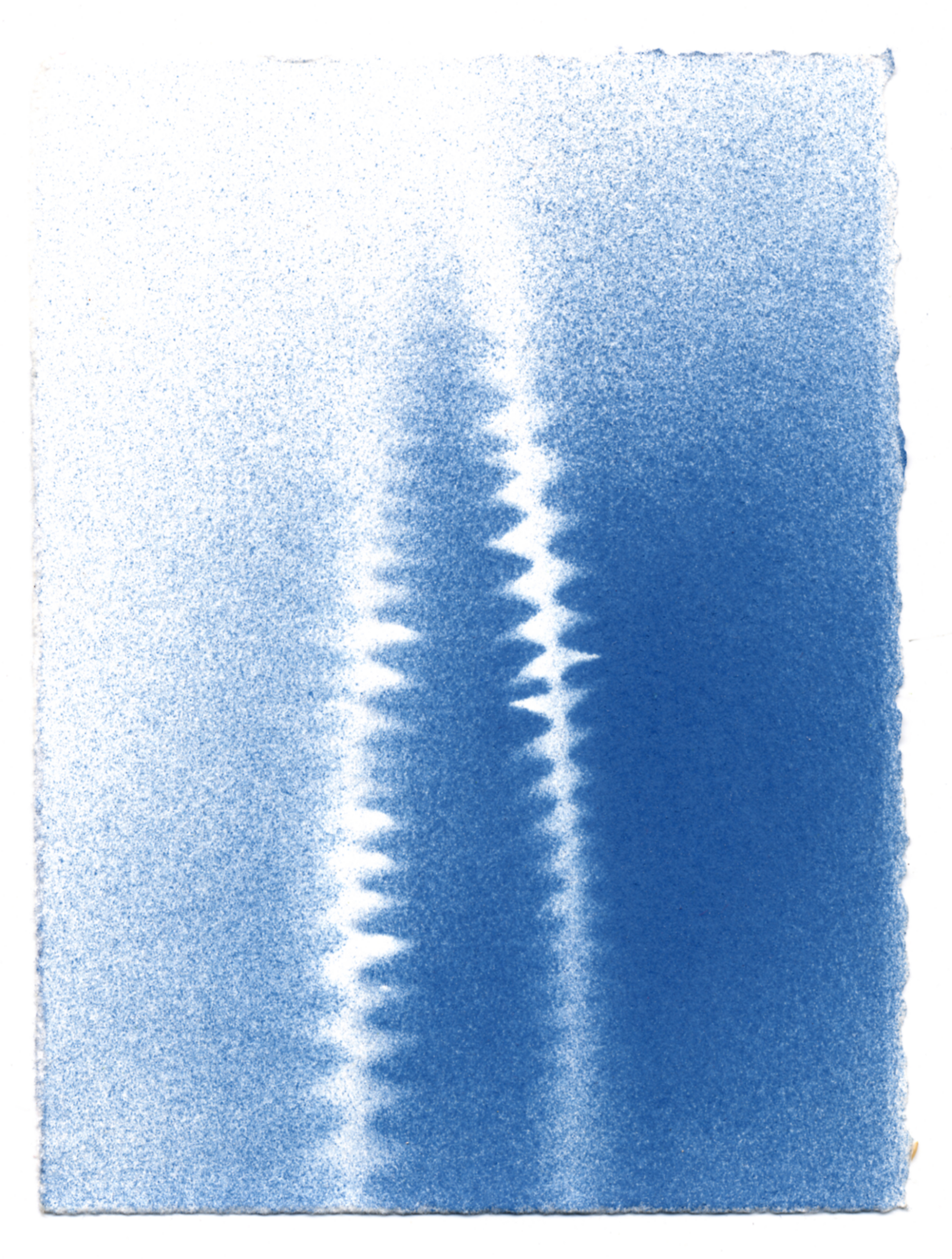‘UNDERSTORY – from the Collected Works of Susan Purdy 2004 – 2016’ 21 February – 19 March 2016 Gecko Studio Gallery
Susan Purdy flies under the radar so far as possible. An introvert by nature she prefers to observe from the sidelines than stand in the spotlight. As an artist she is not interested in art world fame but she is thoroughly ambitious for her art practice and actively seeks out an audience for it. Art is at the centre of her life and she continues her dedication to working in her Gippsland studio, pushing the boundaries of ideas and materials.
Her subject matter is, and always has been, the connection to nature she feels.
Her creative quest is to make this experience visible, live on the page, to marshal the forces of light and energy and translate the untranslatable.
The key to making this happen using the photogram process, and for the viewers understanding of the medium; the elements of nature used to make these images are recorded rather than imagined or described. They are found and placed by the artist. As a record, they retain the direct connection, the exact shape and size of the object printed – nature’s presence is contained and continues within the space of the paper. This faithful imprint making a fundamental link with nature that holds the work, creating the firm base upon which a delicate shadow play is performed.
The way photograms are made is very much a performance; in the darkened room light sensitive paper is unwrapped and objects placed on its surface. When every detail has been attended the exposure is made – a moment in time, a sudden flash and the light is conducted, directed and withheld – using hands and little makeshift wands to dodge, and card with holes to burn the places of the print which need to darken down. This complicated dance has its own written score that is tested, refined and adjusted.
A lengthy planning culminates in this fleeting testing moment – the delivery requiring a warriors precision and speed – for those few seconds it is make or break.
The artist has not invented these objects and is not responsible for their existence - they remain themselves, their inherent beauty shines through. Her job is to understand and skilfully employ the photomedia; to use her experience to predict that certain arrangements will hold power, will give the landscape a voice that can be heard. And so the work comes into being as a collaboration between the artist and the natural world - that is always and freely offering up its rich bounty. This generosity and love rewards the close and fine attentions of the artist, and is made available to others through her images. They are reminders and messages from nature, wanting to be reclaimed.
Susan Purdy lives and works in the Strzelecki Ranges, in Gippsland, on the South Eastern corner of Australia. Her work is focused upon reinterpretation of early photographic practices. It is in a number of significant public collections including the National Gallery of Australia and the National Gallery of Victoria.
ARTIST STATEMENT
In Understory, the artworks are shaped more like the spaces between trees in a forest than the regular rectangular window frame. They offer slim glimpses of a subtle, quieter spaciousness and describe the experience of reading and knowing the land, being amongst animals, birds and plants, breathing in and out the cool fragrant air of the understory. Strangely sparse images recalling the vitality of the forest.
I have experimented with many different forms for my work in the past, from 21 metres of continuous imagery (‘the lost forest’ - part of which is currently on display in ‘Now is the Hour’ at Latrobe Regional Gallery) to miniature cameos, I have made an effort to shake up the way my work deals with representing space and to sidestep the usual expectations of a viewer. I want to use my work to explore form, to understand space and slippage, to discover the hidden powers of spatial arrangements and geometries. The work is essentially still experimental.
There are more possibilities than you would initially think in a small collection of thin black strips of paper. Turning the strip sideways creates a panoramic view with provocative and interesting formal qualities. Presented both vertically, horizontally and individually, in pairs and groups of threes, the works read like a sequence of the Roman numerals; 111, 11, and 1, a dash, and the ‘equals’ are symbols also formed. Also, each picture is mysteriously a number.
Nothing is uniform in this collection of images, yet order is still clear. It seems evident that rhythm plays a big part in visual organisation, somehow connecting with the beating heart and the throb of life sensed all around.
The Mysteries of Pollination suggests invisible circulations, and ancient flowing journeys of pollen through our air, propelled on seasonal winds, away to where, like lock and key, a fit is made and the spark of new life is struck. The cell divides in two.
The air is full of things we do not see; pheromones, pollen, dust, and carbon. Its particles continually fall around us, floating alongside and moving freely into and out of our bodies. Alive to this perception these art works speak about other ways that time can be measured and experienced, with its many living rhythms. The works present a parallel perspective, making adjustments to our normal view.
Inhale/Exhale divides our breath into a rhythmic pair. Following the breath connects our mind and body in awareness. These pairs come together to complete the whole. Tension exists in pairing, a paradox that seems particularly potent. Male and female parts are both essential to creation. The pulse of sensation between polarities is the energy of life.
The views suggested by this work signal big shifts in perspective; our eyes range from close inspection of orchids flowering secretly on the forest floor to distant mountains and the starry night sky.
Duality is ever present.
Near and Far are also a pair.
